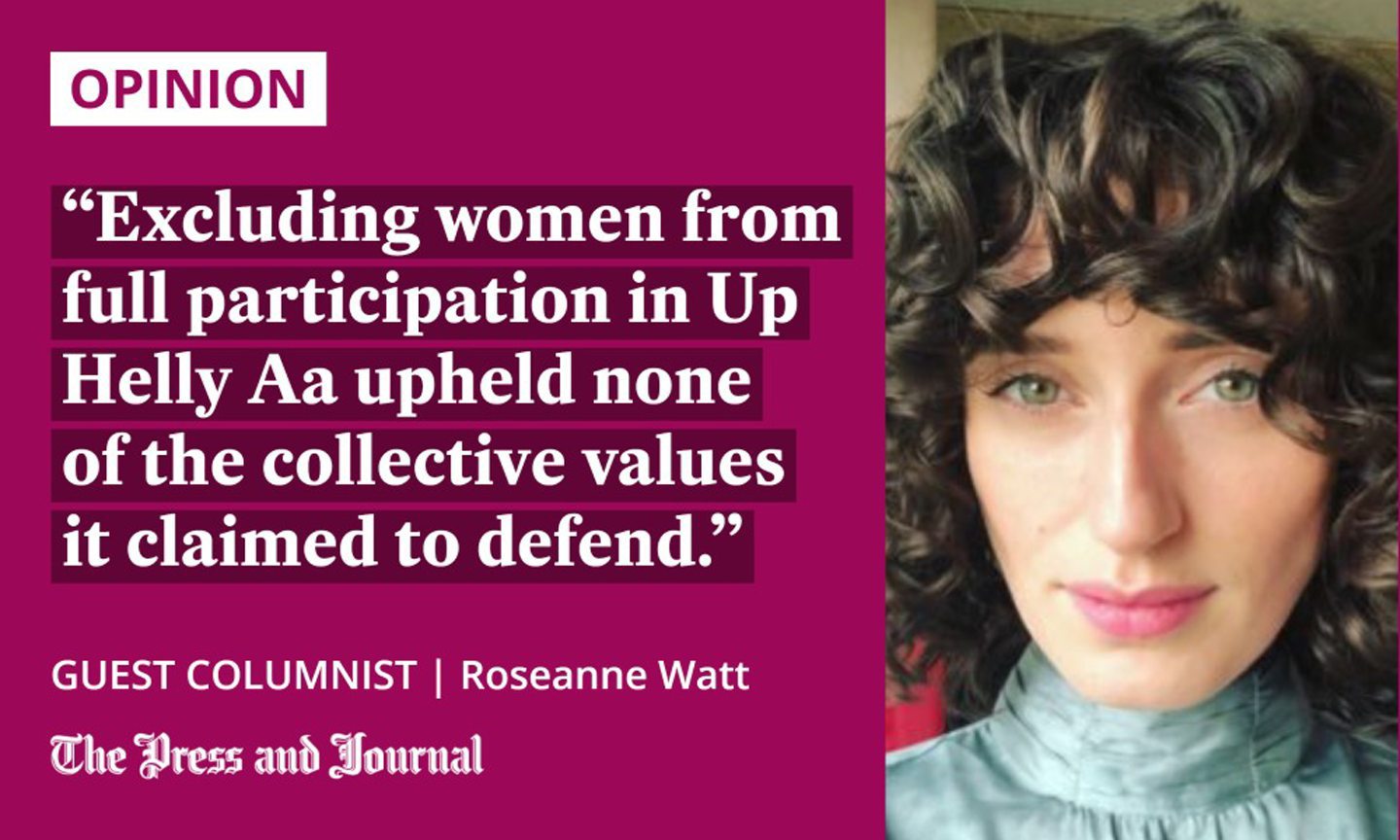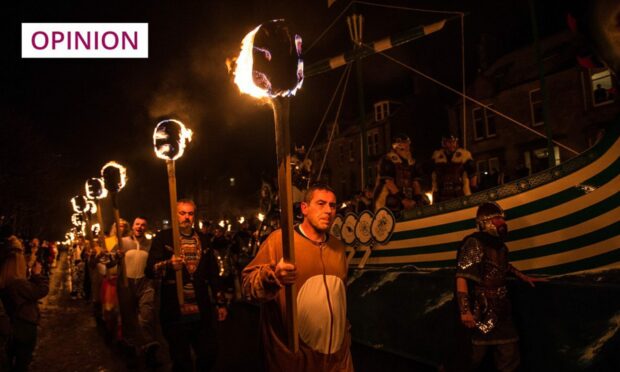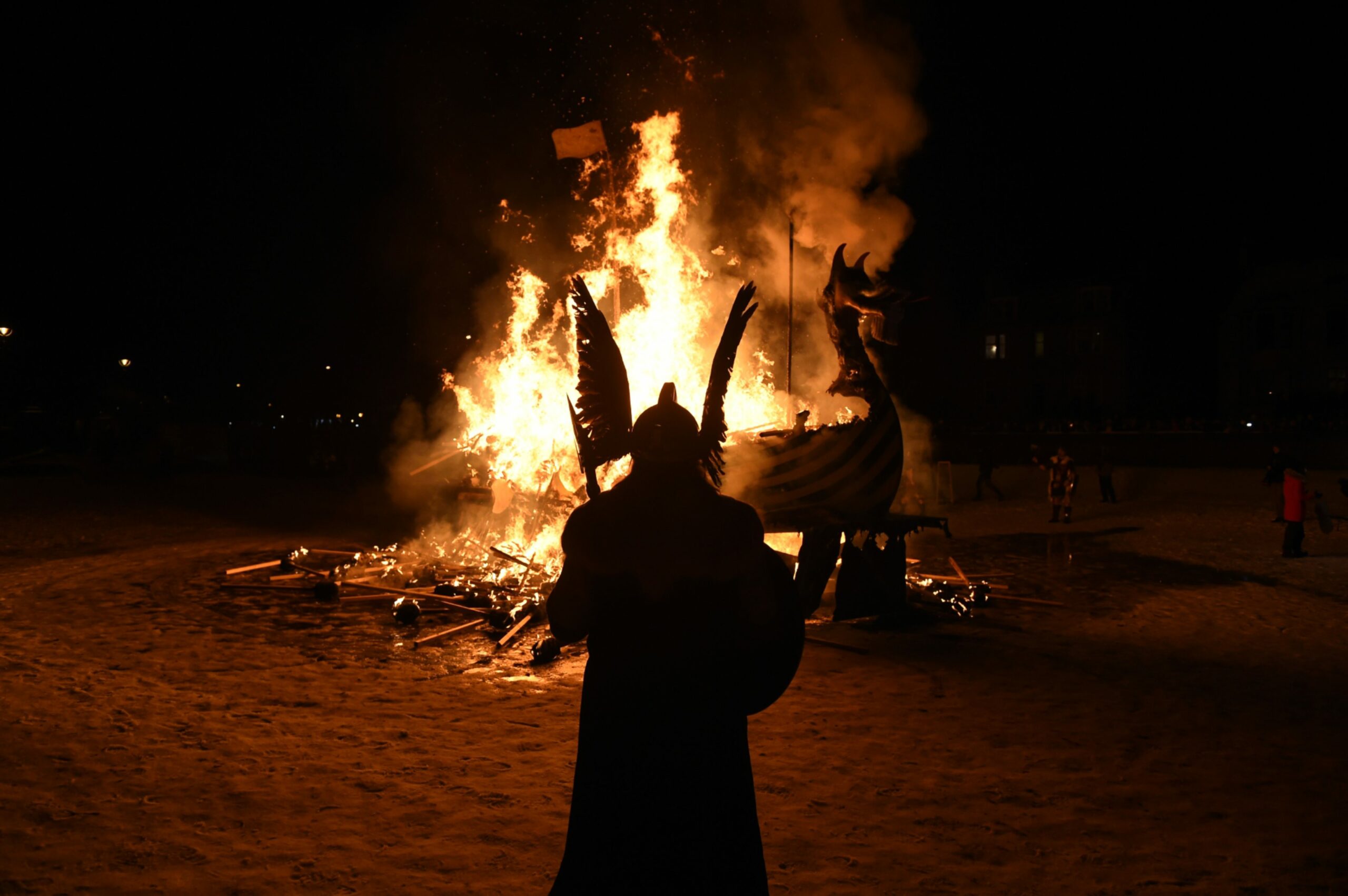The first recorded instance of a woman marching in the Lerwick Up Helly Aa procession was in 1902.
According to historian CE Mitchell, “the Committee put its foot down on this experiment, and, so far as it is known, it was not repeated”.

In 1985, the all-male committee would again stamp down on the matter, this time squashing the ambitions of a group of 13-year-old girls who had had the audacity to form a squad-act and attempted to join the Junior Up Helly Aa. On learning of their intent, a member of the then-committee was sent to intervene, ensuring the lasses would not march alongside the boys at the main public procession.
Let’s reflect on that a moment: a grown man walked into a school and told a group of children they could not participate in the biggest event in their community’s calendar, for the plain fact they were girls.
Barring 50% of a generation is a poor survival strategy
There has never been a good argument for the exclusion of women and girls in Up Helly Aa, though many were given. “It’s not historically accurate”, “it’s a private party; the organisers can do what they want”, and “women aren’t strong enough to carry the torches” were a few of the more absurd justifications given.
There was, however, one argument that held a certain significance: “It’s tradition, and you can’t change tradition.”
Listen, I’m not without sympathy for those who valued the tradition argument as an important one. I know it stems from wider, very valid fears about the survival of island ways of life.
In a world where few things are built with longevity in mind, where islands are often valued more for their resources than their people, where the housing crisis continues to prevent many Shetlanders from returning back home, it is easy to see how local traditions become important tools of continuity, community-building and belonging.
Community-building and belonging are hardly nourished through a message that says the labour, creativity and joy of women and girls is of less worth than their male peers
Under the weight of such anxieties, I very much commend the current LUHA committee for lifting its ban on women.
The issue always was, however, that excluding women from full participation in Up Helly Aa upheld none of the collective values it claimed to defend. If you want heritage skills and culture to prosper in the future generation, barring 50% of that generation from such knowledge is an extremely poor survival strategy.
As for community-building and belonging, these things are hardly nourished through a message that says the labour, creativity and joy of women and girls is of less worth than their male peers.
Shetland women never fit into traditional gender roles
For me, one of the most frustrating aspects of the “tradition” argument was how it simply did not reflect Shetland’s own history, and the centrality of women within it. Ours has always been a predominantly working class culture, where women’s labour rarely aligned with traditional gender roles of the time, due to the precarity and hardship of island life.
Records recount how Shetland women were frequently seen delling rigs, caaing sheep, mending nets, carrying peats in kishie baskets and knitting as they went, leading one writer to wryly comment that “Shetland women are the best of the men”. What a betrayal, then, to see some Victorian, upper-class gender ideology defended as integral to the spirit and function of Up Helly Aa.
For those lamenting the change, I hope there is comfort in knowing that Up Helly Aa is moving forward in ways that can only bolster the survival of Shetland’s traditions. This is a victory for everyone, and I applaud all the activists and campaigners who have brought it about at last.
Last year, I was lucky enough to attend an online gathering of some of these activists, celebrating the culmination of the Weemin’s Wark project, organised by local art collective, Gaada. Later, I would write this about the event: “I am still high on hope from last night; the most revitalising evening I’ve had in a long time. It’s winter now, but I must confess I’m thinking of spring, and the audacity it takes to interrupt a frozen landscape.”
Long live audacious lasses, and long live Up Helly Aa.
Roseanne Watt is a writer, filmmaker and musician from Lerwick in Shetland



Conversation